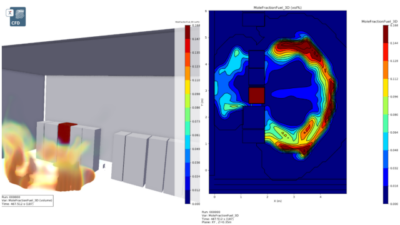
A Chinese scientific research center has built the fastest supercomputer ever made, replacing the United States as maker of the swiftest machine, and giving China bragging rights as a technology superpower.
According to an article written by Ashley Vance in the New York Times, the computer, known as Tianhe-1A, has 1.4 times the horsepower of the current top computer, which is at a national laboratory in Tennessee, as measured by the standard test used to gauge how well the systems handle mathematical calculations, said Jack Dongarra, a University of Tennessee computer scientist who maintains the official supercomputer rankings.
Modern supercomputers are built by combining thousands of small computer servers and using software to turn them into a single entity. In that sense, any organization with enough money and expertise can buy what amount to off-the-shelf components and create a fast machine.
The Chinese system follows that model by linking thousands upon thousands of chips made by the American companies Intel and Nvidia. But the secret sauce behind the system — and the technological achievement — is the interconnect, or networking technology, developed by Chinese researchers that shuttles data back and forth across the smaller computers at breakneck rates, Mr. Dongarra said.
In 2002, the United States lost its crown as supercomputing kingpin for the first time in stunning fashion when Japan unveiled a machine with more horsepower than the top 20 American computers combined. The United States government responded in kind, forming groups to plot a comeback and pouring money into supercomputing projects. The United States regained its leadership status in 2004, and has kept it, until now.
At the computing conference on Thursday in China, the researchers will discuss how they are using the new system for scientific research in fields like astrophysics and bio-molecular modeling. Tianhe-1A, which is housed in a building at the National Supercomputing Center in Tianjin, can perform mathematical operations about 29 million times faster than one of the earliest supercomputers, built in 1976.
For the record, it performs 2.5 times 10 to the 15th power mathematical operations per second.



